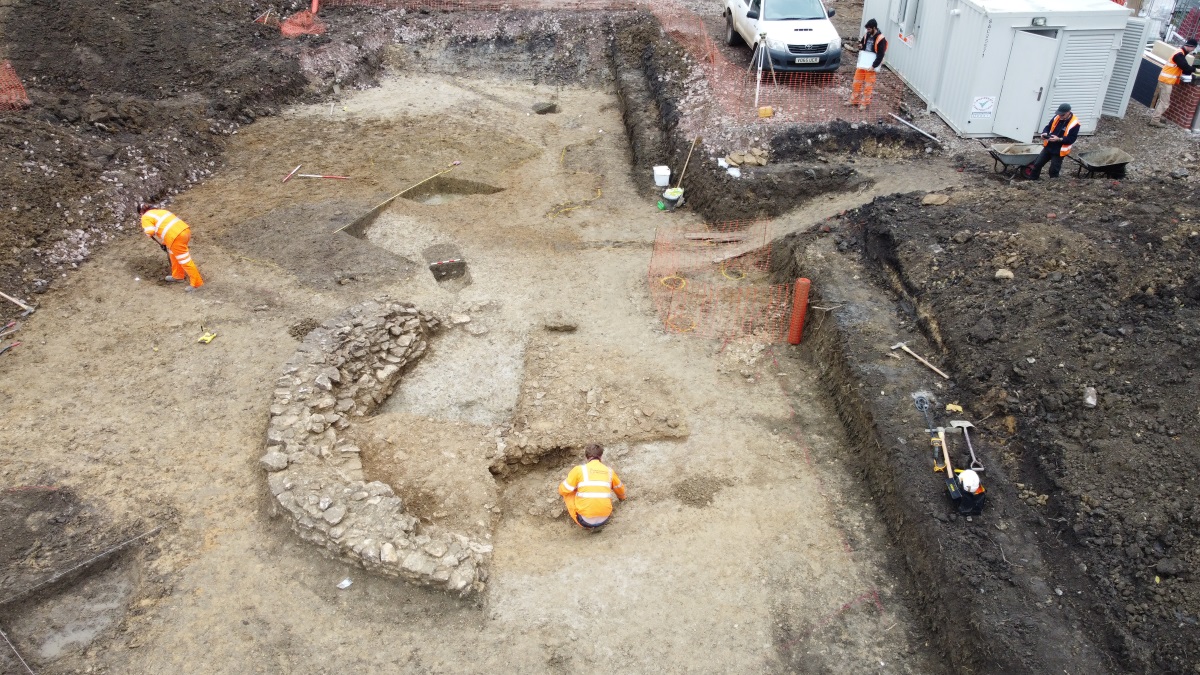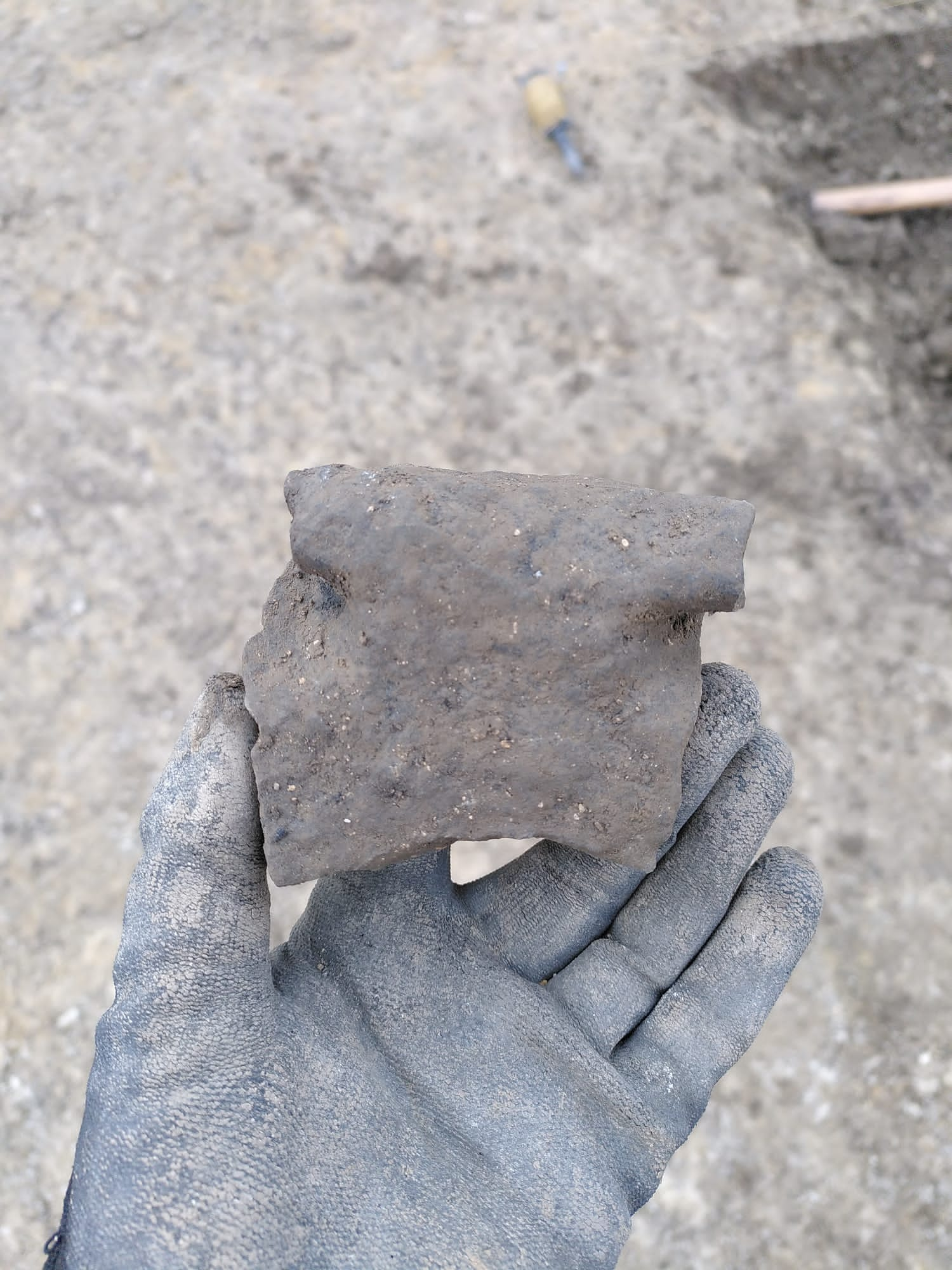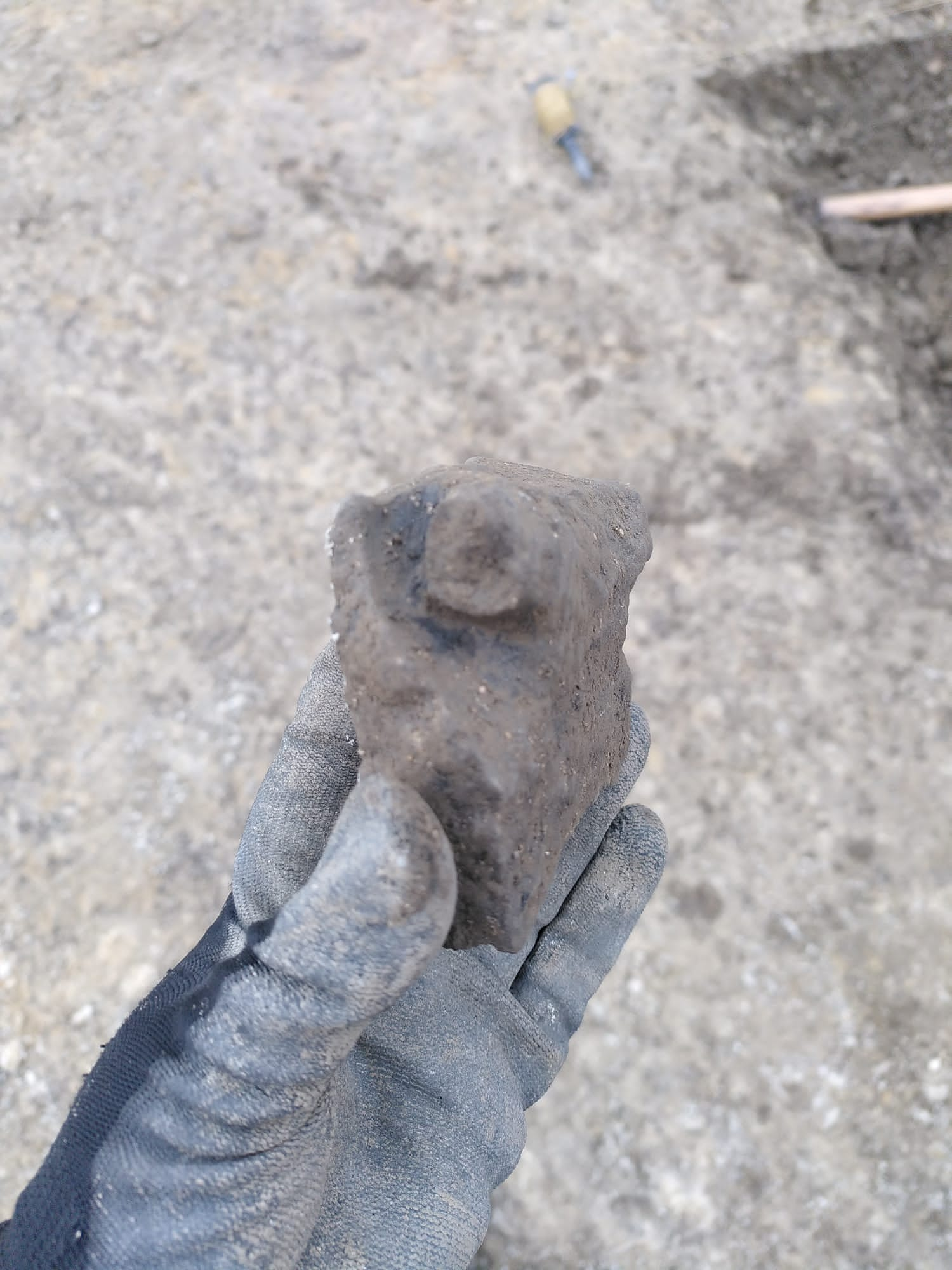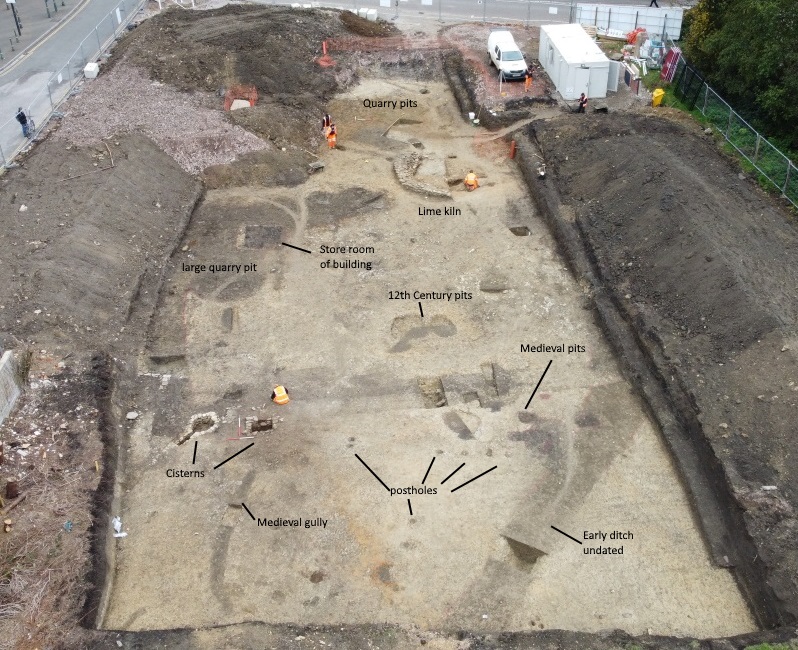Calne excavation highlights
- 10th December 2021
A hint of Saxon archaeology, medieval town plots, a lime kiln, pits, ditches and more – a fair wishlist for any town centre excavation!
We’ve recently excavated an area in the medieval core of Calne, in north Wiltshire, on behalf of Orion Heritage and Churchill Retirement Living. Now fieldwork is finished, finds and environmental analysis can begin. Whilst this work is ongoing, we thought we’d share our top 3 highlights so far:
1. Weaver’s workshop
One of the first features we found was the base of a stone building. Well preserved ones are less common than you might think, as stones were often pilfered for other buildings. This building had one open room and a second with a hearth and sunken store or cellar. It was probably a workshop and predates an 1828 map. If walls could talk, perhaps they would share the clack of a loom weaving cloth – the town’s main industry until the 1800s – or of the people who toiled away here.
Pan around the 3D model below to explore the building.
2. Lime kiln
A medieval lime kiln is next up on our list of highlights. Tantalising, it hints at stone buildings nearby and is a link to the builders of the town’s early High Street.
Introduced by the Romans but little used during the Anglo-Saxon era, lime kilns saw a resurgence during the medieval period. These kilns created calcium oxide (lime) for using in mortar, plaster, lime wash, tanning and later agriculture.
Ours lies at the back of Calne High Street and is surrounded by large quarry pits – probably where most of the limestone it burnt was sourced. Thanks to a shallow dish found by the kiln’s foundations, we know that it’s medieval. In this period, lime kilns were often built specifically for the construction of a few nearby buildings, so tended to be short-lived.

Remains of the lime kiln’s stone walls and base being excavated
3. Origins
Our final highlight takes us to the earliest days of Calne. Around 900 years ago, town planning first began with long narrow ‘burgage’ plots laid out along a road. Houses and shops fronting the street had land at the back for workshops, growing food or keeping animals and dumping rubbish. Today, this road is still in use as Calne High Street.
Intriguingly, our excavations at the back of the High Street found an even earlier ditch. Calne has Saxon origins, like many towns. But Saxon archaeology is famously elusive, so uncovering this chapter is tricky and therefore special.
Whilst we can’t be certain, our early ditch is most likely Saxon: it’s cut by a 12th century burgage plot, on a different alignment and (characteristically) contained almost nothing. Our sole find from the ditch is an oddly shaped stone, possibly for grinding or sharpening. A mystery find from a mysterious time? We’ll have to wait for finds analysis to know more!
 Mystery find from the site’s earliest ditch – flat side of the worked stone |
 Side view of the worked stone |
You can hear more about the site on BBC Radio Wiltshire. Listen to Tom, one of our Project Managers, talking about the excavation on this morning’s breakfast show (jump to 7.20am): https://www.bbc.co.uk/sounds/play/p0b2242s
Fieldwork is just the first phase of archaeology. Over the coming months, the story will continue to be unravelled by our finds and environmental archaeologists, so stay tuned for more.

Aerial view of the excavation (credit: all images Worcestershire Archaeology)
Post a Comment